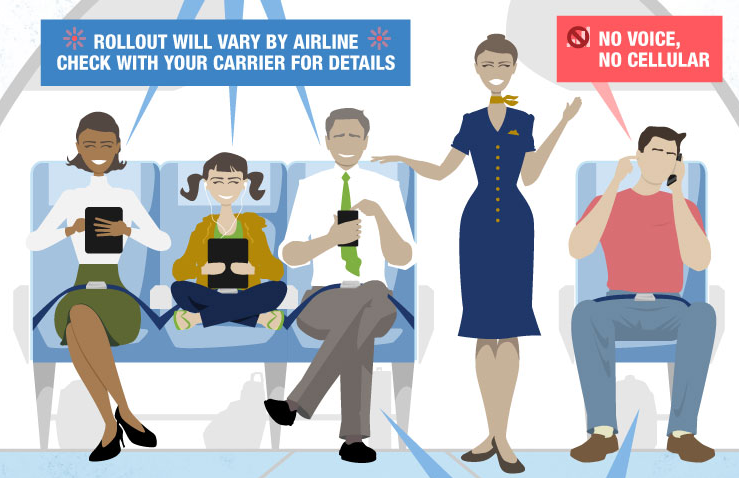The long struggle between airlines and your unrelenting in-flight boredom is over.
The Federal Aviation Administration(FAA) announced today that airlines can expand passenger use of tablets and other personal electronic devices to all phases of flight — including takeoff.
But while the FAA is relaxing its rules, it’s ultimately leaving the real decisions up to airlines, which will have to decide whether the expansion is safe for their planes.
“It will take some time for each airline to certify their fleet is safe, but we expect implementation to be soon” FAA administrator Michael Huerta said during a press conference today.
Under current rules, passengers are required to turn off their devices while planes are traveling under 10,000 feet — all in an effort to avoid interference with airplane equipment.
But while airlines and the FAA have long feared that tablets and e-readers interfere with in-flight systems, there’s no real proof that such interference exists.
The new rules, however, don’t extend to cell phones, which the FAA says should still be in airplane mode or have cellular service disabled. That means no in-flight voice calls. Thank goodness for that.
The development is a good sign, ultimately, not just for passengers, but also for airlines, which can offer flights with one less layer of frustration. Frequent fliers rejoice.


